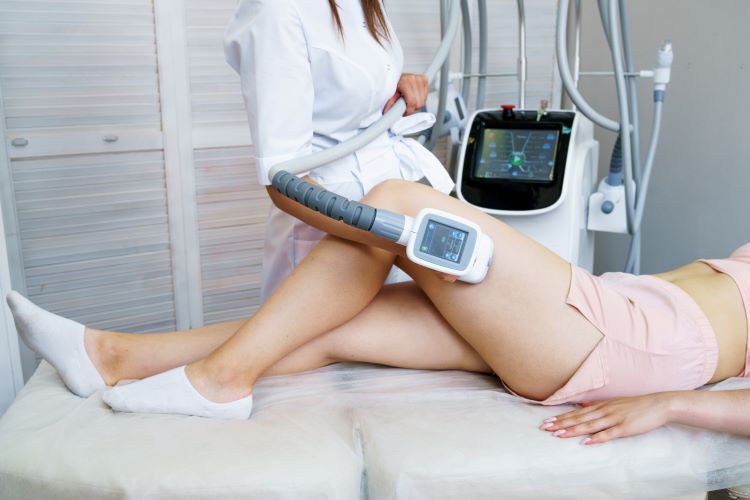Exploring Non-Surgical Fat Removal Options
Interested in learning about non-surgical options for body fat reduction? Many people explore treatments like fat dissolving injections or localized body contouring to support their personal goals. Find helpful resources about available procedures, local providers, and how non-invasive methods may fit your needs.

What Are the Most Popular Non-Surgical Fat Removal Treatments?
The non-surgical fat reduction market has expanded dramatically in recent years, with several technologies emerging as frontrunners. CoolSculpting (cryolipolysis) remains one of the most recognized treatments, using controlled cooling to freeze and eliminate fat cells. The procedure typically takes 35-60 minutes per treatment area, with the frozen fat cells naturally processed and eliminated by the body over the following weeks.
Another popular option is radiofrequency-based treatments like Vanquish and TruSculpt, which use heat energy to destroy fat cells without damaging surrounding tissues. These treatments are particularly effective for larger areas like the abdomen and flanks. For those seeking muscle definition alongside fat reduction, Emsculpt and Emsculpt Neo combine high-intensity focused electromagnetic technology to simultaneously build muscle and reduce fat—offering a dual benefit not available with other modalities.
Injectable treatments like Kybella have gained popularity specifically for submental fat reduction (double chin), using deoxycholic acid to break down fat cell membranes. Meanwhile, ultrasound-based systems like UltraShape Power deliver focused ultrasound energy to mechanically disrupt fat cells without affecting surrounding tissues.
What Are the Benefits of Body Contouring Without Surgery?
The most compelling advantage of non-surgical fat removal is the absence of incisions, anesthesia, and their associated risks. Patients can typically return to normal activities immediately after treatment, making these procedures truly “lunchtime” options that fit conveniently into busy schedules. The risk profile is significantly lower than surgical alternatives, with minimal side effects that may include temporary redness, swelling, or sensitivity in the treated area.
Non-surgical treatments also offer targeted precision, allowing practitioners to address specific problem areas that may be resistant to diet and exercise. The results develop gradually over weeks to months, creating a more natural-looking transformation that doesn’t signal an obvious cosmetic intervention. Additionally, many of these treatments stimulate collagen production, which can improve skin texture and elasticity—providing an additional aesthetic benefit beyond simple fat reduction.
For patients with multiple areas of concern, these treatments can be easily combined and customized to create comprehensive body contouring plans. The ability to treat various body areas in stages also makes the financial investment more manageable for many patients compared to the upfront cost of surgery.
What Should You Consider Before Undergoing a Non-Surgical Fat Removal Treatment?
Realistic expectations remain paramount when considering non-surgical fat removal. These treatments typically achieve 20-25% reduction in fat layer thickness per session in the treated areas—significantly less dramatic than surgical liposuction. Ideal candidates should be near their target weight, as these procedures are designed for contouring rather than significant weight reduction.
Medical history requires careful consideration, as certain conditions like hernia mesh, metal implants, or pregnancy may contraindicate specific treatment technologies. A thorough consultation with a qualified provider is essential to determine candidacy and identify the most appropriate treatment approach. Provider expertise significantly influences outcomes, so research credentials, experience, and before-and-after galleries before committing to treatment.
Treatment protocols vary significantly between technologies and individual patient needs. Some require single sessions while others necessitate multiple treatments spaced several weeks apart for optimal results. Understanding the full treatment plan, including potential maintenance sessions, helps manage expectations regarding both timeline and financial commitment.
How Long Does It Take to See Results From Non-Surgical Fat Removal?
Patient experience varies considerably regarding results timeline. With cryolipolysis (CoolSculpting), initial changes may become visible within 3 weeks, but optimal results typically manifest between 2-3 months post-treatment as the body naturally eliminates damaged fat cells. Radiofrequency and ultrasound treatments often show gradual improvement over 6-12 weeks as fat cells break down and metabolic processes clear cellular debris.
Injectable treatments like Kybella generally require 2-6 sessions spaced 4-6 weeks apart, with visible improvement after each session but full results emerging approximately 12 weeks after the final treatment. The body’s metabolic rate influences result timing—some patients notice changes faster than others based on individual physiology.
Many providers document progress with standardized photography to objectively track changes that might be difficult to perceive subjectively. While initial results appear within weeks, the full transformation continues to develop over months, and some technologies demonstrate continued improvement for up to 6 months after treatment completion.
What Are the Typical Costs of Non-Surgical Fat Removal Treatments?
Non-surgical fat removal treatments represent a significant but variable investment depending on the technology used, geographic location, provider expertise, and number of treatment areas. CoolSculpting typically ranges from $600-$1,500 per treatment area, with most patients requiring multiple areas treated for balanced results. Radiofrequency treatments like Vanquish average $500-$800 per session, with recommended protocols of 4-6 sessions for optimal outcomes.
Ultrasound-based treatments typically cost $700-$1,500 per session, while injectable options like Kybella average $600-$1,200 per treatment, with most patients requiring 2-4 treatments. Electromagnetic muscle stimulation technologies like Emsculpt command premium pricing at $750-$1,000 per session with recommended protocols of 4 sessions.
| Treatment | Technology | Average Cost Per Session | Sessions Needed | Total Treatment Cost |
|---|---|---|---|---|
| CoolSculpting | Cryolipolysis | $600-$1,500 | 1-2 | $600-$3,000 |
| Vanquish | Radiofrequency | $500-$800 | 4-6 | $2,000-$4,800 |
| UltraShape | Ultrasound | $700-$1,000 | 3 | $2,100-$3,000 |
| Kybella | Injectable | $600-$1,200 | 2-4 | $1,200-$4,800 |
| Emsculpt | Electromagnetic | $750-$1,000 | 4 | $3,000-$4,000 |
Prices, rates, or cost estimates mentioned in this article are based on the latest available information but may change over time. Independent research is advised before making financial decisions.
Maintenance treatments may add to long-term costs, though many patients find results last several years with stable weight. While more affordable than surgical liposuction (which averages $3,500-$7,000 per area), non-surgical options may ultimately approach similar costs when multiple sessions and areas are treated. Many providers offer financing options or treatment packages that provide some cost savings compared to à la carte pricing.
Non-surgical fat removal technologies offer effective alternatives for those seeking body contouring without the risks and recovery of surgery. With various modalities available targeting different mechanisms of fat cell destruction, patients now have unprecedented options for addressing stubborn fat deposits. Success depends on appropriate candidate selection, realistic expectations, and collaboration with experienced providers who can recommend the optimal technology for specific concerns and desired outcomes.
This article is for informational purposes only and should not be considered medical advice. Please consult a qualified healthcare professional for personalized guidance and treatment.




